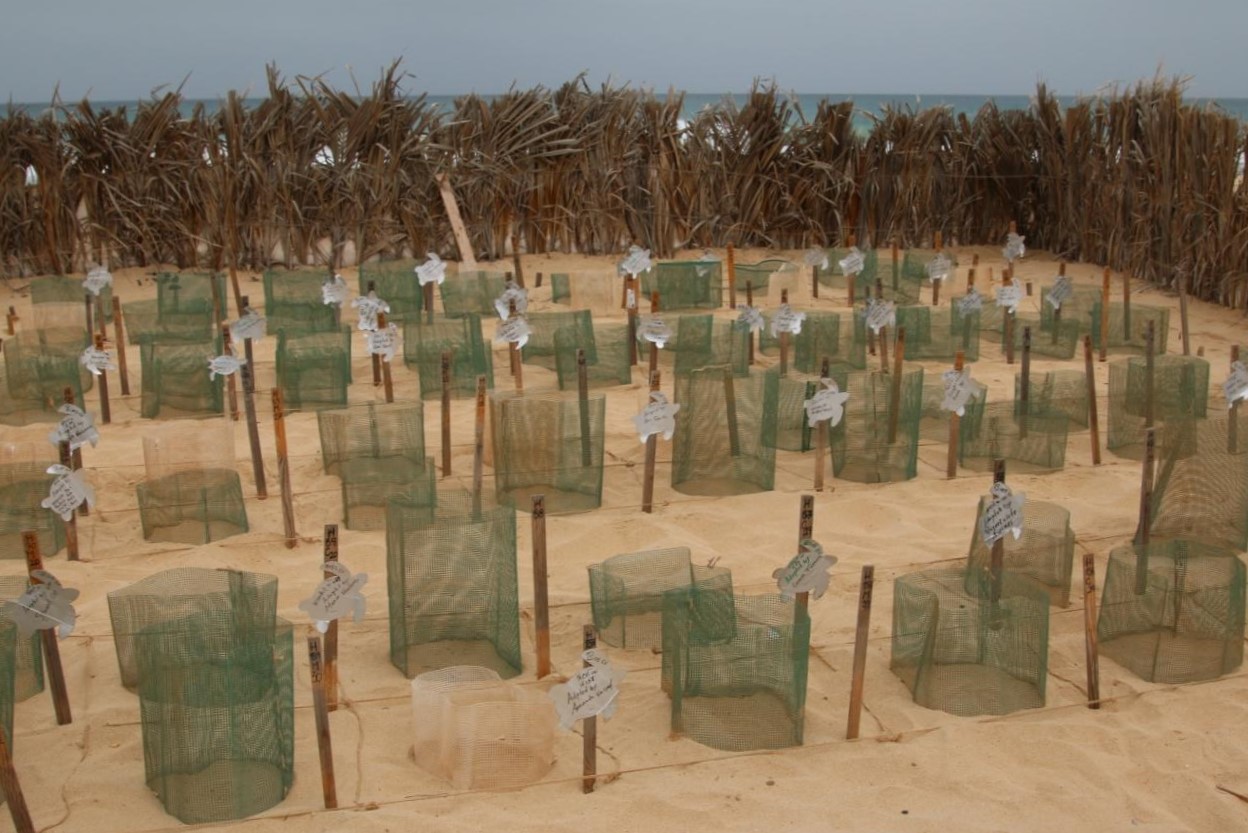Sea turtles are globally endangered and facing anthropogenic threats. To mitigate the negative impacts on sea turtle populations, different conservation strategies have been developed and implemented. For instance, when an endangered population suffers a high embyionic mortality from predation, human poaching, beach flooding or erosion, the relocation of clutches to safer and controlled areas can lower these threats. However, the use of hatcheries is controversially discussed, with some previous studies reporting negative results such as low hatching success, skewed sex ratio or phenotypic alterations of hatchlings.
In a new study with participation of the Doñana Biological Station – CSIC, scientists have evaluated the efficiency of beach hatcheries compare to in-situ incubation in Cabo Verde. They used data from six nesting seasons, from 2013 to 2018. During this study, several thousand high-risk clutches from loggerhead turtle (Caretta caretta) were relocated to a hatchery constructed within the Sea Turtle Natural Reserve in Boa Vista Island.
The findings confirmed that the in-situ nests within the reserve have extremely high egg mortality that is usually over 70%. Mean hatching success of clutches relocated to hatcheries was significantly higher than in-situ clutches with mean values between 70% and 85%.No significant differences were observed in the incubation period, the size and the behavioural response of hatchling between relocated and in-situ clutches.
As longs as a sea turtle population is endangered and hatching success is low, clutch relocation programs which are design to have an impact at the population level, are considered an efficient tool that contributes to its recuperation. Nevertheless, strict recommendations that increase hatching success while maintiaining natural hatchling phenotype must be implemented. The scientific team do not recommend the use of hatcheries without careful consideration of local ecological conditions and conservation priorities.
Reference:
Martins S, Ferreira-Veiga N, Rodrigues Z, Querido A, Santos-Loureiro N, Lopes K, Abella-Pérez E, Oujo C, Marco A. 2021. Efficacy of hatcheries as a conservation tool in threatened sea turtle rookeries with high nest mortality. Ocean and Coastal Management, 212: 105807. https://doi.org/10.1016/j.ocecoaman.2021.105807
https://doi.org/10.1016/j.ocecoaman.2021.105807








 Las altas temperaturas están provocando que las lagunas y las marismas de Doñana pierdan agua rápidamente
Las altas temperaturas están provocando que las lagunas y las marismas de Doñana pierdan agua rápidamente



